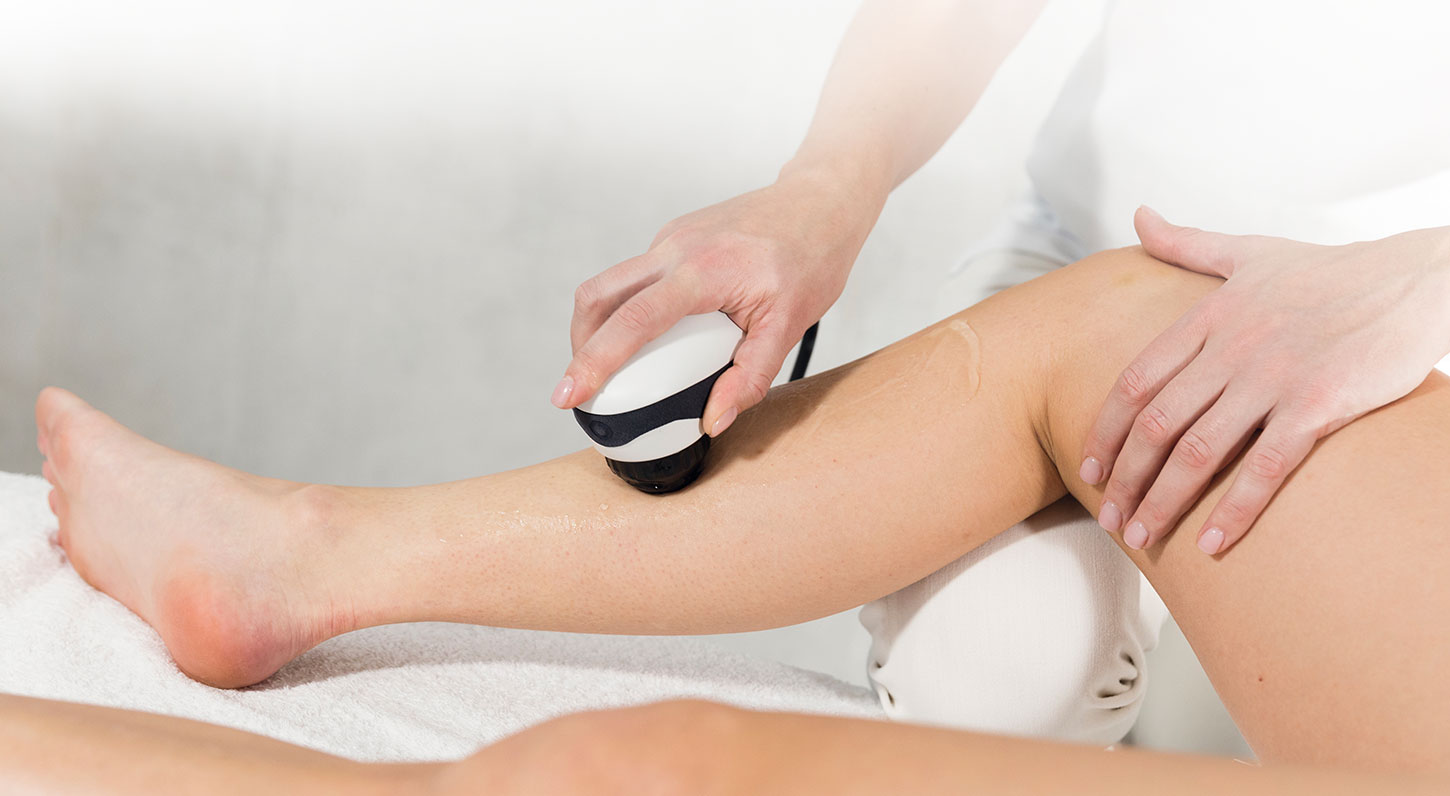Shock waves are high-energy, audible sound waves. They are characterised by a rapid increase in pressure and a short pulse length. They occur in our everyday lives, for example, when aircraft break the sound barrier.
Shock waves have been used in medicine since 1980. Originally, the then-new procedure was introduced to remove kidney and gall stones without surgery – which was successful and revolutionised the treatment of these complaints. The second area of application was the treatment of poorly healing bone fractures, so-called pseudarthroses.
Due to these successes, more and more research was done on the effect of shock waves on the human body. Subsequently, it was quickly discovered that the procedure is also suitable for the treatment of numerous painful diseases of the musculoskeletal system. Since the beginning of the 1990s, this area of application has become increasingly important and has since proven its worth, including in top international sport.
Shock wave therapy is a non-invasive treatment method that is used for various musculoskeletal complaints, i.e. disorders affecting the muscles, bones, joints, nerves, tendons, or ligaments. The targeted application of high-energy shock waves can alleviate pain and accelerate the healing of injuries. There are two types of shock waves: radial and focused shock waves. Radial shock waves spread evenly through the tissue and are less intense. They are often used to treat superficial tissue such as tendons and muscles. Focused shock waves, on the other hand, concentrate on a specific point in the tissue and are more intense. They are often used for deeper indications or calcium deposits.
The benefits of shock wave therapy are manifold. In addition to relieving pain and accelerating healing, it can also reduce inflammation, improve blood circulation and increase the mobility of the affected area. Furthermore, the treatment generally has hardly any side effects. The targeted application of sound waves can relieve pain and speed up recovery.
However, it is important to understand the differences between radial and focused shock waves in order to choose the right treatment for the specific problem.
Today, doctors use shock wave therapy to treat common orthopaedic medical conditions such as frozen shoulder, tennis elbow, achillodynia, patellar tip syndrome and heel pain in plantar fasciitis. Depending on the indication, focused or radial shock waves (or both) are used.
To read more: History of Shock Wave Therapy
Detailed background knowledge on the physics and technology of shock waves is available on our website at:
What are shock waves?



